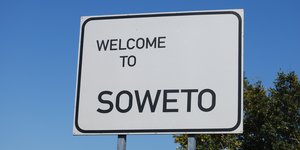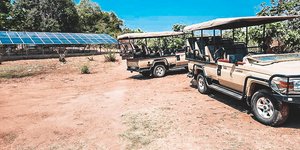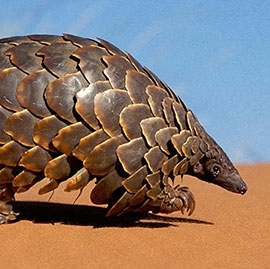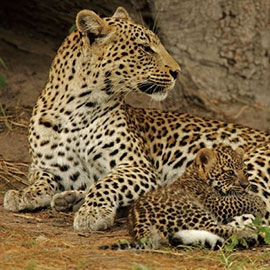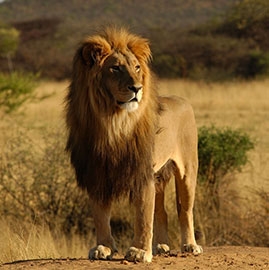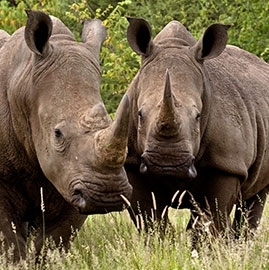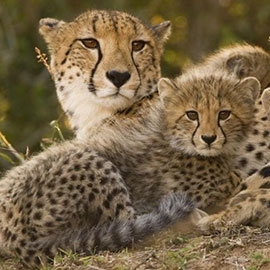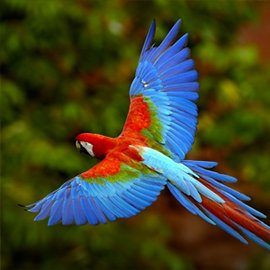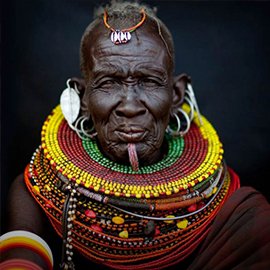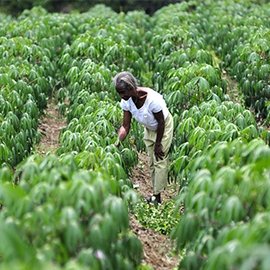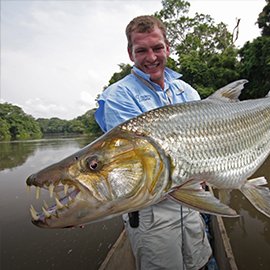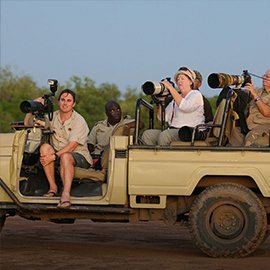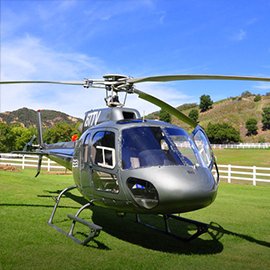Greater Kruger National Park
Safari suitability: 10/10
Find your tourSome the best game viewing in S. Africa with all of the big five, including black and white rhino.
What YAS members think
Highlights
- An hour’s flight from Johannesburg.
- A luxury, photographic safari.
- Praised for its habitat diversity.
- Offers daily opportunities to spot all of the big five in their natural surroundings.
- A home to many endangered species, including African wild dogs and pangolins.
About Greater Kruger National Park
The Greater Kruger National Park is part of what was orginally Sabie Game Reserve, proclaimed in 1898. The largest wildlife conservancy in Africa, Greater Kruger is a somewhat complex beast to understand. It is comprised of over 20 game and nature reserves that border Kruger National Park, many of which go by more than one name. Several of these are part of an entity of privately-owned reserves collectively known as the Associated Private Nature Reserves, or APNR.
Prior to the 1990s, many of the game and nature reserves were separated by fences, which also limited animal movement. In June 1993, fences were removed between Kruger and APNR. Today, animals are free to roam between all reserves and only the exterior borders of the park are fenced. As Greater Kruger National Park is contiguous with Kruger National Park, it also enjoys a wide array of flora and fauna, including the big five. This is one of the few destinations where black and white rhino can be seen.
Greater Kruger National Park vs. Kruger National Park
The near identical naming of the two parks can be confusing for those looking to book a safari. Their proximity and open borders make for similar wildlife view opportunities and weather patterns. What sets them apart is Kruger National Park is public park run by South African National Parks (SAN Parks) and Greater Kruger National Park is comprised of private reserves.
Here are some of the benefits of going on safari in Greater Kruger National Park:
Safari intimacy
As with most private game reserves, guest numbers are limited and monitored and are usually tied to accommodation. As a result, game drives are more intimate. It’s not uncommon to experience wildlife sightings without another vehicle present, which often is not the case in Kruger.
Safari freedom
Private reserves set their own rules, which is great news for photographers and anyone who wants some flexibility in their game drives. In Greater Kruger, those wishing to be at a specific location for first-light photography can start earlier, and vehicles are allowed off-road. Night drives and walking safaris are also common.
Safari exclusivity
The safari experience, in general, is of a high standard in Greater Kruger. Luxury accommodation with unparalleled wildlife viewing opportunities abound. Some of the most experienced, eagle-eyed safari guides are employed by the top lodges. They will blow your mind with their vast knowledge and inscrutable ability to locate wildlife.
As is usually the case, exclusivity comes with higher price tag. Safaris in Greater Kruger tend to be more expensive than those in Kruger, but Kruger does have its share of opulent digs. Kruger has a wider array of lodging options.
Wildlife of Greater Kruger National Park
Greater Kruger offers some of the richest wildlife populations in South Africa and possibly in all of Africa. Spotting the big five, even the rhino, is often possible. Cheetah, wild dogs, giraffe, spotted hyena, jackal—side-striped and black-striped, springbok, zebra and even wildebeest can be found here. Bird lovers will also want to flock (pun intended) to Greater Kruger; it has over 500 species of birds.
Associate Private Nature Reserves
The Associated Private Nature Reserves is a co-operative organization established to coordinate the interests of its members and to act as a single body in interacting with government entities. It is roughly 1800 km² (700 miles²) size. Although the reserves are private, they were established in the vein of conservation and hunting is not permitted in APNR and in all Greater Kruger.
Reserves that form part of APNR include the following:
Klaserie Private Nature Reserve
Other notable game reserves not part of the conglomerate:
Manyaleti Private Game Reserve
Sabi Sand Game Reserve, which includes Mala Mala
Balule Nature Reserve
Size: 400 km²
Part of the APNR: Yes
Also known as Balulu Private Game Reserve, this reserve lies east of Klaserie Private Nature Reserve—it does not share a border with Kruger. Its location along the Olifants River make it an ideal place for hippos and birdlife, particularly eagles such as the martial eagle. Elephants, giraffe, buffalo, giraffe, hyena and wildebeest are common sightings here. For big cat sightings, cheetah and leopard are rare.
Balule Nature Reserve has anti-poaching personnel and is managed by a committee elected by its landowners.
No self-drives are allowed in Balule. There are less than 10 lodges in this reserve.
Kapama Game Reserve
Size: 130 km²
Part of the APNR: Yes
Located south of Balule and west of Klaserie, Kapama Game Reserve (or Kapama Private Game Reserve) is a modest in size. There are presently less than five luxury resorts, each offering a structured, twice-daily game drive schedule. Private game drives are available at a premium and with advanced booking. Like most of the reserves in Greater Kruger, it has an environmental and cultural focus. Kapama’s anti-poaching unit uses trained bloodhounds to help track poachers. Its lodges have eliminated plastic straws and benefit from an on-site water plant, which allows them to supply guests fresh water in glass bottles.
Klaserie Private Nature Reserve
Size: 600 km²
Part of the APNR: Yes
Also known as Klaserie Game Reserve or just The Klaserie, it is one of the larger reserves in Greater Kruger and the largest reserve of the APNR. It was established in 1969 and became a nature reserve in 1972. The reserve is managed by an executive committee comprised of and elected by its landowners. Klaserie is involved in several conservation initiatives such as The Southern Ground Hornbill Project, the Rhino Project and the Elephant Project. There are currently less than 10 luxury camps in this reserve.
Manyaleti Private Game Reserve
Size: 230 km²
Part of the APNR: No
Sort of tucked right in the middle of Greater Kruger, Manyaleti means ‘place of the stars’ in the local language of Shangaan. Founded in 1963, it has only three lodges, providing guests with a more intimate safari experience. Neighboring reserves, Timbavati to the north and Sabi Sands to the south, receive more guests but also have more water, which can make for easier wildlife spotting. The reserve is owned and managed by the local Mnsi tribe.
Sabi Sand Game Reserve
Size: 650 km²
Part of the APNR: No
Sabi Sand, sometimes referred to as Sabi Sands, is the largest private reserve in Greater Kruger. It is also the most well-known reserve and, with just under 25 lodges, has the most lodges. It was part of the original Sabie Reserve, which was the predecessor of Kruger National Park. Landowners officially formed Sabi Sand Reserve in 1948. Although this reserve has many lodges, as compared to other reserves in Greater Kruger, day visits are not allowed. Only guests of Sabi Sand lodges can do game drives in the reserves. Sabi Sand is a great place to spot the big five and it is particularly renown for its leopard sightings.
MalaMala
Size: 130 km²
Part of the APNR: No
MalaMala is located within Sabi Sands Game Reserve. In existence since 1927, the reserve has welcomed many photojournalists and filmmakers who feel drawn to the land’s unique natural beauty that remained untamed over the years. Tjololo, a famous male leopard that became a star of the National Geographic documentary, lived in the reserve.
MalaMala features many different habitat types, which are an allure in themselves and range from open savannah to granite outcrops. Thirteen kilometers (eight miles) of the perennial Sand River also flows through the reserve and has been named as one of the most distinct landscape features.
Although many visitors feel attracted to the park for the regular sightings of the big five, other—just as fascinating and important species—call MalaMala home, too. Threatened animals such as cheetah, pangolin and African wild dogs are being protected within the reserve. A variety of birdlife is yet another highlight—bird lovers can hope to be rewarded with sightings of some rare species such as martial eagle and ground hornbill.
Timbavati Game Reserve
Size: 530 km²
Part of the APNR: Yes
Nestled between Kruger and Klaserie lies Timbavati. Lucky guests may encounter one of Timbavati’s white lions. These gorgeous felines are born with snow-white coats and piercing blue eyes—the result of a genetic color mutation. They are indigenous to the Timbavati Reserves. In addition to the big five, Timbavati touts the big six for the birders: lappet-faced vulture, martial eagle, saddle-billed stork, kori bustard, ground hornbill and Pel’s fishing owl. There are presently 15 lodges in Timbavati and only two vehicles per wildlife sighting are allowed.
Thornybush Game Reserve
Size: 140 km²
Part of the APNR: Yes
Thornybush is named for the thickets and thorned bushes which grow in the area. A few years ago, landowners removed 27 km (10 miles) of fence that separated it from Timbavati and, consequently, Kruger National Park. Since the removal guests have been privy to larger numbers of wildlife, especially grazers such as elephant, buffalo and antelope. Like all the reserves in Greater Kruger, Thornybush has the big five. It’s also possible to see other big animals including cheetah, wild dogs, giraffe and hyena. Guests wishing to interact with local communities can see, and often contribute to, one of the many projects the reserve is involved with by booking a transformative safari. Solo travelers are welcome in this reserve. Thornybush touts custom packages for its solo guests which allow them to pick and choose which activities they join and which they enjoy alone. And, aside from the months of August and October, and major holidays, no single supplements are charged. There are 12 lodges in this reserve.
Umbabat Private Nature Reserve
Size: 180 km²
Part of the APNR: Yes
Umbabat is situated north of Timbavati and east of Kruger National Park. It has only two lodges: Motswari Game Lodge and Geiger’s Camp. The reserve is involved in many conservation research initiatives, including a counter-poaching unit. Guests can follow updates on projects such as elephant research, leopard research, lion research and vulture research on their official website.
When to visit Greater Kruger National Park
The best time for wildlife viewing is the dry season (June to September). From August to September many animals congergate around water sources making it a popular time to visit.
Park activities in Greater Kruger
A wide range of activities is offered, including walking safaris, 4x4 safaris and night safaris. Skilled rangers, who closely collaborate with the trackers from the Shangaan tribe, accompany visitors on their outdoor activities and vouch for an optimal game viewing experience.
The park’s accommodation is famed for its traditional, yet luxurious, facilities that aim to take the traveler back in time and provide one with a glimpse of the first safaris.
This is the prime safari area of South Africa with the best circumstances for wildlife photography courses, wildlife sightings and all levels of hobby photography. Best leopard sightings, probably in the world Excellent Big 5 sightings Excellent lodges with excellent rangers and trackers Great safaris old style with nowadays comfort Easy access by air and road, yet no self-drive in the reserves Photographic equipment for rent available in several lodges Great flexibility and customized game drives for photographers The Sabi Sand in Greater Kruger National Park are really the best South Africa has to offer on safaris. Away from the crowds and right on the first row for the best sightings.
Sort by:
Manyeleti is part of the Greater Kruger National Park and borders the Kruger Park, Sabi Sands and Timbavati so is home to the super-seven animals (big five plus cheetah and wild dogs). We have been on game drives at most of the reserves and concessions in and around the Kruger and the worst was being crammed 10 into a vehicle and then queuing at sightings. The Manyeleti has a low density of lodges so queuing is unheard of and we had a private vehicle without breaking the bank. Manyeleti means 'Place of the Stars' and the night skies are ideal for shooting star points and star trails!
One of the greatest and largest national parks in Africa. The world famous Kruger National Park is home to the famous Big 5 - lion, leopard, elephant, buffalo and rhino. The park also holds a big concentration of cheetah and wild dog in this magnificent reserve. Its not uncommon to see these animals while spending a few days in the park. As a visitor to the park who lives very close to the Kruger its my opinion that it holds the greatest diversity of wildlife of any park in Africa. Just the other day we saw the Big 5, cheetah and wild dog all in one day! Truly amazing. The Parks infrastructure is really good with a great road network and a 4x4 is not necessary. The Parks camps are all comfortable with a large variety of accommodation available inside and outside the Park. The private reserves, mainly the Sabi Sands, Timbavati and Manyleti border the park to the West and offer some high end accommodation with Private guided safaris on their private concessions. These areas form part of the Greater Kruger. The Kruger also offers a lot for birdwatchers, with a bird list of over 500 species; Kruger is one of the best birding destinations in Africa. A 10 day trip in the Kruger could easily yield over 300 species of birds; this with the amazing mammal diversity and scenery makes Kruger a must visit for any traveller to South Africa.
Arguably one of the most famous national parks in the world, the Kruger National Park offers one of the best wildlife experiences in Africa. On an average 4-day stay between the months of May to September you can expect to see most of the big five as well as many other African mammals, birds and fauna. The photos attached are taken from the Timbavati Game Reserve, on the Western Edge of Kruger.
Greater Kruger National Park is home to an amazing variety of wildlife and nature scenes. The "BIG 5" is what everybody comes to see yes sure they are amazing and quite common if you know where to look. "Big 5" Animals: Lion, Leopard, Cape Buffalo, African Elephant and Black Rhino. TERM: The term big five game was used by big-game hunters and refers to the five most difficult animals in Africa to hunt on foot and that killed the most hunters in Africa. The term is used in most tourist and wildlife guides that discuss African wildlife safaris. The members of the Big Five were chosen for the difficulty in hunting them and the degree of danger involved, rather than their size. So hippo and giraffe is not part of the big 5. Black rhino: Let's start with the BLACK RHINO... this is the actual one of the big 5 but due to its number that is very low the white rhino stand in for it on safari. You can get very close to the animals in Kruger as they over the years have seen many vehicles and are not to bothered with them they have keen hearing and is still aggressive towards any moving object. So be ware they might charge without warning. African elephant: Look at the ears you will see the map of Africa hence the name and of course they are found here. Very large animals and dangerous if you are between the mother and the babies or close to a elephant bull in MUST of musth. highly aggressive behavior and accompanied by a large rise in reproductive hormones. Don't try t play with these animals as they will accept a challenge in this state and a vehicle is almost the right size for them to play with. Lion: In Greater Kruger National Park you can consider yourself lucky when you see these animals mating in the road and yes it does happen very often as they don't have a breeding season. Lions hunt when they are hungry night or day, so changes are good you will see some action if you hang around them long enough. Buffalo: The CAPE buffalo can be found in large herds in the Kruger Park. When you do get a herd crossing your path it can take from 15 min to an hour from them to cross the road depending on the size of the herd. They leave a unmistakable trail of dung in the road also lion prides are never to far behind the herd. Lions will keep looking for the injured or sick animals, calf buffaloes left alone will be an easy meal for hungry lions. Leopard: Most elusive of them all you might find these animals lying on a branch of a Marula tree in the middle of day. They use these trees to have a better view, to hang their last kill, or just to take a nap. Remember they are solitary animals and males very territorial also very aware of what's happening around them. Spend time with them if you lucky enough to find one as they will move sooner or later. Best time to view them early morning and late afternoon. Hope this gives you a better idea of these amazing animals, don't forget about the other animals while on safari. Other amazing animals are the cheetah and the wild dog. When you see the Big 5 and the above two then you have seen the Magnificent seven and that does not happen every day. Bernhard W Bekker Safari & Tour Guide Private Kruger Safaris
On a recent trip to South Africa, I was lucky enough to visit the spectacular Kruger National Park. What a thrill! We stayed at Savanna Private Game Lodge in Sabi Sand Game Reserve, which is located in the Greater Kruger Park area. During our safari adventures we saw the Big 5 in two days, as well as other exciting wildlife, including crocodile, wild dogs (with their pups!), mongoose, warthog, wildebeest, zebra, and much more. Kruger is a fantastic destination for families and honeymooners, alike. No matter what property you stay at within Kruger, you are sure to see lots of fascinating animals up-close and personal!
Driving to Greater Kruger
Depending on which gate you'll be accessing, it's about a five-hour drive from Johannesburg to Greater Kruger. From Maputo, Mozambique, the drive is around five to six hours, depending on gate. This does not include border crossing time. Most safaris to Greater Kruger are by charter flight, as most upscale lodges include internal flights in their pricing.
The following airlines travel to Greater Kruger National Park

Airlink is a privately-owned, BBBEE Level 4 business and regional airline serving a comprehensive network of smaller destinations throughout Southern Africa. We are now operating independently under our own unique 4Z flight code offering more freedom, more choices and more travel opportunities. Visit website
Also flies to:










Air shuttle and charter services throughout Africa, former name - Pelican Air Services. Federal Airlines (Pty) Ltd. Trading as Federal Air, is the preferred aviation partner for the top safari destinations in Southern Africa, and the market leader in Aviation Shuttle and Charter Services. Taking guests to the most beautiful and remote parts of Africa is our specialty and a market segment which Federal Air innovated in the late 1990s. We partner with world leaders in luxury safari experiences, and are committed to raising the bar in aviation to play our part in delivering a unique and seamless travel experience unparalleled anywhere in the world. Visit website
Also flies to:



Greater Kruger map
Nearby parks and game reserves
Related articles
Latest photos

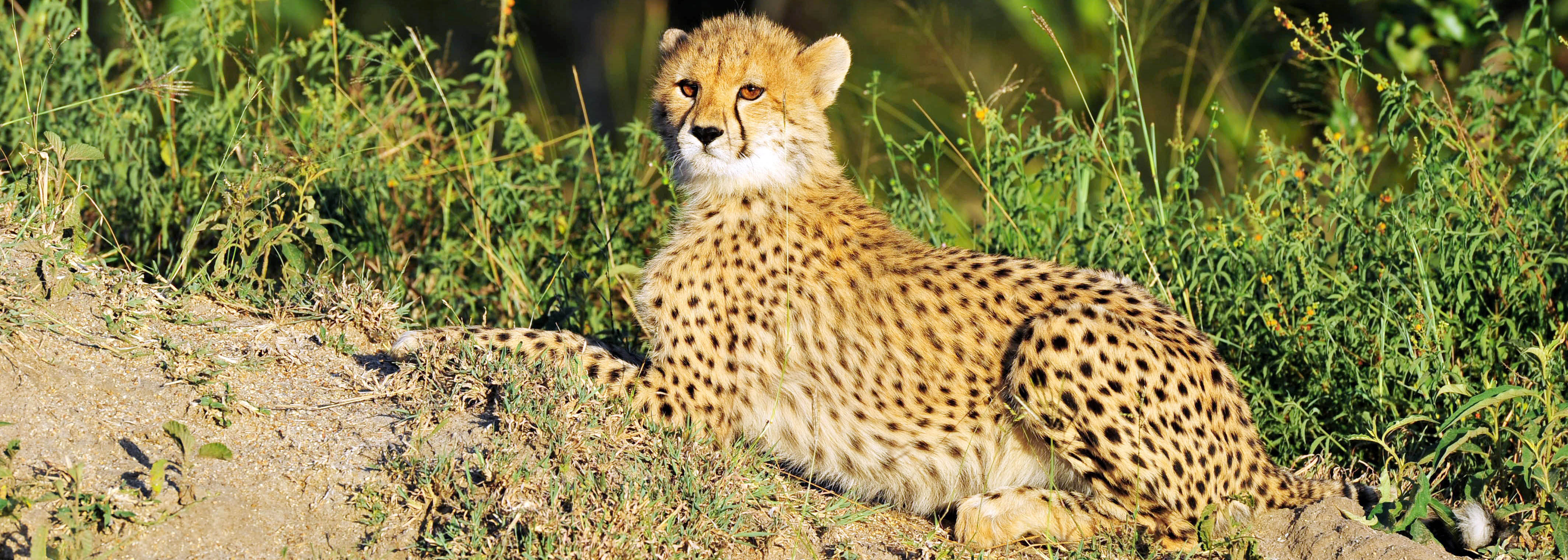
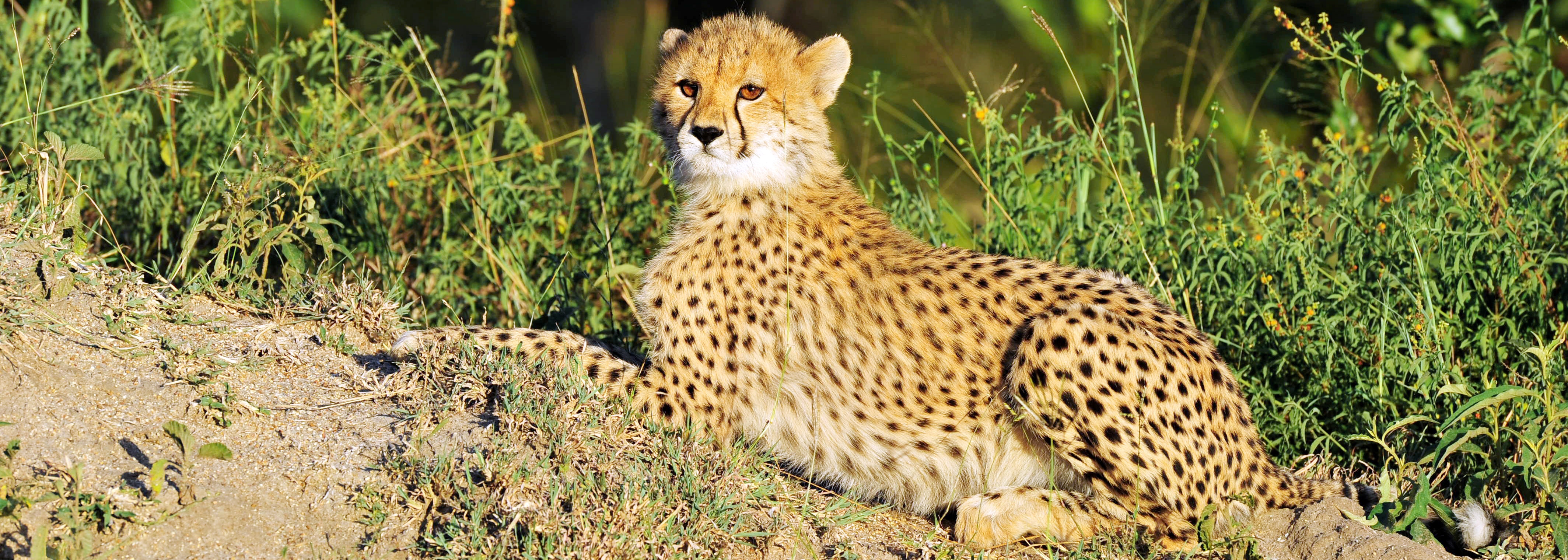
 South Africa
South Africa
 Namibia
Namibia
 United States
United States
